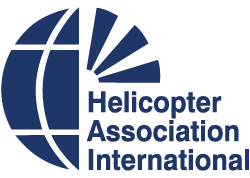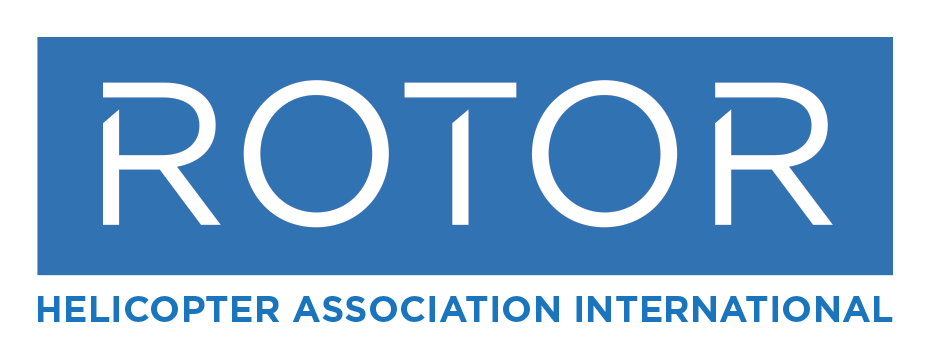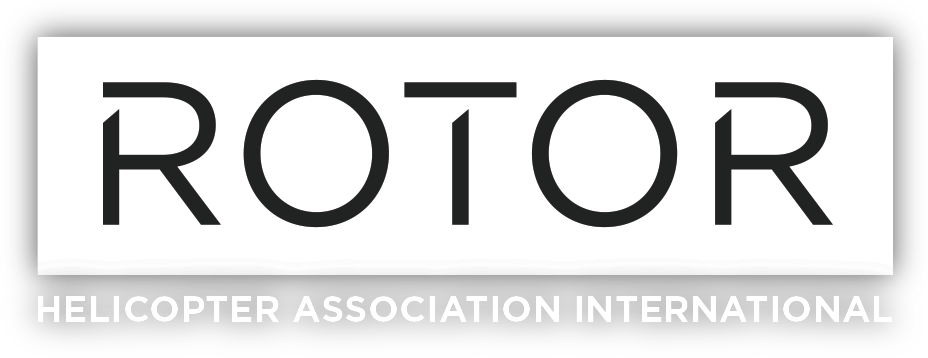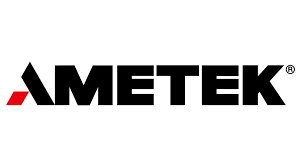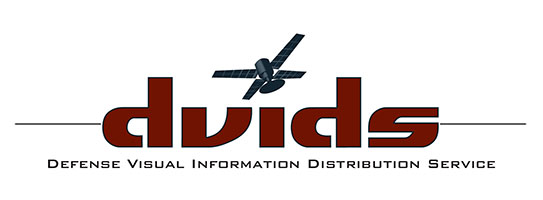For more than 70 years, HAI has provided support and services to its members and to the international helicopter community. Headquartered in Alexandria, Virginia, HAI members safely fly more than 5,000 helicopters some 2.3 million hours each year. Governed by a Board of Directors elected from the membership, with daily operations conducted by a dedicated professional staff.
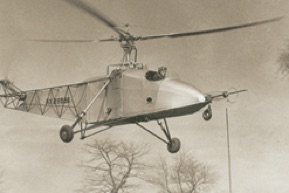
Sikorsky VS-300, Piloted by Les Morris (photo by HAI)
On September 14, 1939, Igor Sikorsky flew his VS‑300, the first controllable helicopter. Less than a decade later, there were hundreds of machines of different sizes and shapes worldwide. Although the helicopter offered limitless uses, an uncertain business climate confronted the fledgling industry. On December 13, 1948, a handful of operators and Art Fornoff, a representative from Bell Helicopter, met at the offices of AF Helicopters in Burbank, California to form a helicopter association for collective benefit. Fornoff was one of the first hired and most experienced pilots for Bell — having flown helicopters since 1945, a date considered to be the beginning of the commercial helicopter industry. The group was so small that they could have easily held their first meeting in a Sikorsky S-55 or a Piasecki HRP-1. Present at that historic first meeting were: Knute Flint, Harry Armstrong, Fred Bowen, and James Newcomb of AF Helicopters; Joseph G. Seward and Roy Falconer of Rotor-Aids; James Ricklefs and Arni L. Sumarlidason of Rick Helicopters; Elynor Rudnick and Bob Facer of Kern Helicopters; Fred Blymyer and Bob Boughton of Helicopter Service, Inc.; James I. “Tommy” Thomas, Ed Eskridge, and Phil Johnson of Sky Farming.
The group initially chose the name of Helicopter Council, but changed the name the following year to California Helicopter Association (CHA). Annual dues were $10. At first, meetings were scheduled monthly, then as necessary. Helicopter rental rates in 1949 were considerably less than they are today. At the 1949 meeting, Stanley Hiller, Jr. demonstrated a Hiller 360, which was developed with help from Bell. This model was equipped with overhead cyclic controls. All present at that meeting agreed that competition was good for the industry. At that same meeting Joe Mashman was introduced as one of Bell’s most experienced pilots, which at that time amounted to four years, the entire history of the commercial helicopter industry. In a news release issued during that meeting, it was noted that in previous years, helicopters had flown 400 hours of fire suppression work in California. The cost of helicopter services in 1949 was considerably less than they are today. Training was $55 an hour, oil exploration was $65 an hour, and passenger rides were about $5. At that first meeting, Jim Ricklefs was elected to be the organization’s first president. Joseph Seward was appointed secretary, and Elynor Rudnick, treasurer.
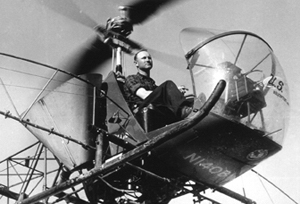
Dr. Voss at the controls of an AGROTORS aircraft (Photo Courtesy of Carrol Voss)
As the industry grew, changes were happening rapidly. In 1950, there were many improvements and features. In an effort to expand the utility and range of the aircraft Bell introduced the 47D, featuring skids instead of wheels. The helicopter was also used for aerial seeding. In the forefront of those efforts was HAI member, Carrol Voss, founder of AGROTORS, who was a pioneer in the use of helicopters for agricultural work. Also, re-supply and medevac missions during conflicts became routine. About this time, Lieutenant Alan Bristow was working in the North Sea. Years later, his name would be synonymous with one of HAI’s offshore member operations.
At the time, there were many issues of concern to the helicopter community, including working with the Forest Service, spare parts availability, flight regulations, insurance, and pilot training. The CHA held an educational meeting on September 21, 1950, for the purpose of acquainting public officials with what the helicopter could do. Following the meeting, a helicopter flight demonstration was conducted by Knute Flint of AF Helicopter, Inc. Harold Gribble then gave each official a helicopter ride, which included an idling engine autorotation landing on a fixed spot to demonstrate the remarkable safety characteristics of the craft. That year the association won its first legal battle when a court ruled that insurance companies could not use the findings of state agricultural hearing boards as grounds for invalidating insurance coverage.
On February 25, 1951, Elmer Schlesinger, president of U.S. Helicopters Inc., based at the Oakland Municipal Airport, was elected president of the CHA. Knute Flint, secretary-treasurer of AF Helicopters, Inc., of San Fernando, California, was named to the post of secretary, and Vaughn Krug of Pacific Helicopters, Burbank, California was chosen as treasurer. In 1951, the CHA had revamped its statement of purpose and broadened its mission statement. The new group was growing and adding new members. The leadership polled its members, who voted to admit to membership any helicopter operator in the U.S. and its territories. Schlesinger announced that membership in the association was to be opened to all operators and manufacturers in the United States and its territories so that helicopter companies throughout the country may more readily gain from the experience and knowledge of fellow operators. The association was founded in 1948 for the purpose of disseminating helicopter information, organizing promotion of the helicopter, mutual assistance, and exchange of technical information.
Also in 1951, membership voted to change the name of the association to the Helicopter Association of America (HAA). However, for some unknown reason, this was not filed until November 1954, leading to some confusion as to when the changeover occurred. At the time, the organization had 17 members operating 50 helicopters. By May 1951 membership had grown to 17 commercial operators and two associate members, Bell and Hiller. By August, Sikorsky had joined as the third associate member.
In 1952, Carl Brady of Economy Helicopters was elected as the third president of HAA. Other elected officers of the organization included H.A. Reidy, treasurer and Eleanor Rudnick, secretary. Brady served as president until Joseph Seward of Rotor-Aids succeeded him in January of 1954. At the time, Seward was the only helicopter pilot in the world to carry a membership card in the Screen Actors Guild. He had already appeared in at least 25 Hollywood productions as a pilot. Other elected officers included R. L. Suggs, of New Orleans, Louisiana, Treasurer and William K. Cowan, Secretary. By January of 1954, member attendance at the annual meeting had grown to 50. This HAA meeting was hosted by Bell Helicopters at its plant in Hurst, Texas, where an additional 75 guest attendees from the U.S., Canada, France, Italy, Japan, and Sweden heard presentations on lowering insurance costs, new air-cooled engines, overhaul costs, and the use of fuel additives. Members and guests were also given a tour of the Bell Aircraft Corporation plant in Fort Worth, Texas. Articles of Incorporation for HAA were filed and formally accepted by the State of California in December 1954.
Rick Helicopters, the world’s largest operator at that time, completed its fourth consecutive year of government survey work in Alaska. Rick Helicopters had already accumulated nearly 14,000 flight hours during that four-year period.
In 1955, Elynor Rudnick of Kern Helicopters was elected president of HAA, the first woman to hold the post. That year Rudnick resided over the 8th Annual Convention which was held at the Piasecki plant in Morton, Pennsylvania. Humble Oil sent several representatives and at that meeting, made arrangements with Rotor-Aids for offshore work. At the time, the going charter rate for offshore work was $700 a month in Louisiana, with 750 hours flight time required per pilot per year. The late 1950s were a period of steady growth for both the industry and HAI.
HAA 8th Annual Convention in San Fransisco, January 1956

HAA 8th Annual Convention in San Francisco, January 1956 (Photo courtesy of Jim Ricklefs)
The 1956 Annual Convention was held at the Sheraton Palace Hotel in San Francisco, California. Carl Agar of Okanagan Helicopters — the first non-U.S. president — succeeded Rudnick. At the three-day meeting attendees agreed that helicopter use was already enjoying an expansion. Ricklefs noted that helicopters were now employed — pulling down smokestacks, blowing ice off of transmission lines, and being used to dry fruit on trees following rains during the critical picking season. Rudnick said that she had used her aircraft for crop spraying, dusting cattle with insect powder, reseeding burned-out forests, and spotting tuna and other fish, hunting whale, and rounding up cattle. Henry Boris, president of Heli-Cop-Air of Paris, said that rotorcraft have been put to many uses in Europe: spraying, crop dusting, and performing rescue operations in the mountains and flood areas of the low countries. This meeting included a tour of the Hiller helicopter plant.
Carl Agar repeated as president in 1957. At that time HAA was pushing for construction of more public-use heliports. Insurance for personnel and aircraft was still an industry concern. In June of 1957 helicopters provided much emergency relief after Hurricane Audrey ripped through coastal Louisiana and Texas.
In 1958, Richard D. Eccles of Calicopters was elected president. J. Cullen Weadock of Chesapeake & Potomac Airways succeeded Eccles. The topic of the day at the convention centered on high insurance rates, need for favorable legislation, and better equipment. Not much has changed since then.
About that time, Carl Brady left his three-way partnership in Economy Helicopters and moved from Washington State to Alaska, where he formed a joint venture with Rotor-Aids. The company’s new name was ERA Helicopters, owned by Carl Brady, Joe Seward, and Ray Falconer. At the time, the number of commercial helicopter operators in the U.S. totaled 160, with a fleet total of 635 helicopters.
At the 9th Annual Meeting in New York, HAA called for modification of restrictive laws that had been drafted mainly for fixed-wing aircraft.
A Bell Helicopter news release heralded the arrival of more than 150 guests from the United States and Canada to the 10th Annual Convention in Fort Worth, Texas. At the convention, helicopter operators were given a tour of the Bell Helicopter facilities, including the new flight simulator, with discussions of ideal helicopter instrumentation and the Bell XH-40.
The Villa Hotel in San Mateo, California, hosted the 11th Annual Convention, which took place January 19-21, 1959. That year membership dues were increased to $50, the first increase. At that meeting, discussion took place on a number of issues including high insurance rates, the need for new legislation, and also for better, less costly equipment. A decision was made during 1959 to publish a monthly newsletter.
Robert L. “Bob” Suggs of Petroleum Helicopters, Inc. (PHI) succeeded J. Cullen Weadock. Attendees to that convention could book a helicopter flight from Los Angeles to Anaheim for seven dollars. Membership dues rose from $10 to $50. HAA’s focus was on ethics, association publications, and a meaningful awards program for those deserving of recognition. The world’s largest commercial helicopter operator at that time was still Rick Helicopters.
Helicopter operations were grossing roughly $30,000,000 annually in the United States and Canada. The industry had grown into a vital service business, which saved or made a considerable amount of money for industries including oil, agriculture, executive and public transportation, utility, pipeline and power, construction, and forestry.
The 12th Annual Convention was held in Anaheim, California, on January 17, 1960. The Hughes Tool Company’s Aircraft Division hosted the event. There were 259 registrants representing 24 states, Montreal, Edmonton, Vancouver, Victoria, and South Burnaby, Canada; along with Bogotá and Columbia, South America.
L. Welch Pogue, first commissioner of aviation, was the keynote speaker at the 13th Annual HAA Convention. The convention was held January 15-17, 1961, in Haddenfield, New Jersey at the Cherry Hill Inn, which had its own heliport. An HAA press release at the time revealed that there were 200 operators with 700 helicopters in commercial service.
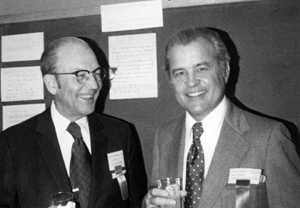
Welch Pogue and Walter Attebery (Photo courtesy of Jim Ricklefs)
HAA opened its new headquarters on March 1, 1961, in Washington, D.C. in the Landmark Building at 1343 H Street, N.W., under the direction of newly appointed Executive Secretary John T. Pennywell, formerly with Keystone Helicopter Corporation. The Association’s membership stood at 57 Regular Members, 24 Associate Members, and four government members; a total of 85 members. The convention netted a profit of $1,700.36.
At the 1961 convention R. L. Suggs, head of Petroleum Helicopters was elected president of HAA. That year, L. Welch Pogue was named Honorary Member of HAA. Then president of HAA, Hal Connors said of Mr. Pogue, “You have proven yourself to be one of the staunchest friends of the helicopter operator. We are keenly aware of your extensive enthusiasm for the helicopter industry, and those of us engaged in the operation of these unique aircraft, wish to express our appreciation for your splendid support.” At the time there were more than 200 helicopter operators and more than 700 commercial helicopters in the U.S. and Canada.
Tragedy struck the commercial helicopter industry on August 4, 1961, when HAA vice president Robert E. Trimble, formerly secretary and general manager of Aetna Helicopters, Inc., died in a helicopter accident. He was making a return flight to his home base of Etna, California, when he experienced an emergency situation and was forced to make an autorotative landing in an area of rough terrain. Trimble had been treasurer of HAA in 1958 and was at that time, serving in the position of second vice president for the year 1961. He was widely known throughout the helicopter industry as one of the top pilots in the business, especially in regard to high-altitude mountain flying.
He was also rated as an A&P mechanic and held an Inspection Authorization. Trimble was instrumental in the formation of Aetna Helicopters in 1955 and much of the success of that fine company has been credited to him. At the HAA Annual Convention in January 1960, Trimble was presented with the “Operator of the Year” award in recognition of his company’s outstanding achievements during the previous year.
Prior to 1955, Trimble had flown for A-F Helicopters of Van Nuys, California, and for Kern Copters of Bakersfield, California. Before that, Hiller Aircraft Company following World War II had employed him. During the war, Trimble had served with the Army Air Corps from 1942 until 1945. His flight experience totaled more than 10,000 hours and included over 6,000 hours of helicopter flight time.
In an effort to construct a fitting tribute to his memory, the Board of Directors of the HAA announced the establishment of the Robert E. Trimble Memorial Award.
The Vietnam War had a profound impact on the commercial helicopter industry around the world as new technology, new capabilities, and newly trained personnel flowed from the military to the commercial sector. Welch Pogue, who in 1942 was appointed by Franklin D. Roosevelt as the first Chairman of the U.S. Civil Aeronautics Board, and Honorary Member of HAI for Life, noted there were 57 different types of services rendered for hire during a twelve-month period ending September 30, 1960.
At the March 1961 meeting, the Board had received a draft proposal from Rick Eccles on “Suggested Ethics and Standards.” Robert Facer of Utility Helicopters was appointed chairman of the Ethics and Standards Committee.
The 14th Annual HAA Convention was held at the Marriott Motor Hotel in Dallas, Texas, January 21-24, 1962. The HAA planned its largest convention to date. Officials anticipated a total attendance of 400 to 500 attendees from around the world. Amendments to the HAA’s By-Laws were voted on by the membership at the annual business meeting in January 1962. Among the amendments receiving approval was the corporate seal, an establishment of HAA as a 501 not-for-profit organization, and the establishment of four membership classifications, including — Regular, Honorary, Associate, and Governmental members.
Several major awards were presented at the Tuesday night banquet on January 23. These included the Lawrence D. Bell Pioneer Award, given to those organizations that had completed 10 years of helicopter operations, the Stanley Hiller, Jr. Pilot of the Year Award, presented each year to the commercial helicopter pilot who performs the most outstanding rescue feat, and the Robert E. Trimble Memorial Award. There was also a special award given to the pilot who traveled the greatest distance by helicopter to attend the 1962 convention. HAA Membership pins were mailed to officials of each member company.
The Manhattan Heliport was the first in the United States to be certified for scheduled passenger helicopter service by the FAA
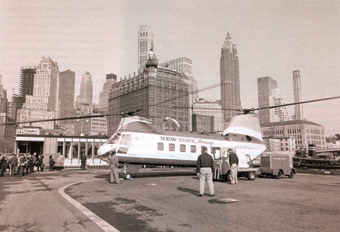
The Manhattan Heliport was the first in the United States to be certified for scheduled passenger helicopter service by the FAA (Photo courtesy of Port Authority of New York and New Jersey)
On December 4, 1962, helicopter pilot James C. Clutz demonstrated the flexibility of helicopters when he executed a rescue mission with his Hiller 12-E, saving 24 men from the sinking ship.
The 15th Annual HAA Convention took place January 13-16, 1963, in Palo Alto, California, at the Cabana Hotel. More than 400 attendees and 16 helicopters showed up for the event. Stanley Hiller, Jr. gave the official welcome at the banquet where awards were given. The HAA newsletter, in February 1963 announced the names of new officers for that year: Walt Attebery, secretary; John Hodge, second vice president; Cullie Weadock, president; Don Larson, chairman of the board; Pete Brown, first vice president; and Carol Voss, treasurer.
Exhibitors included Aqavenco, Brantly, Lycoming, Bayside Electric, Hughes Tool Company, Simplex Manufacturers, King Radio, Bell Helicopters, Ryan, Carson Helicopters, Continental Motors, G.E. Small Engines, and Hiller Helicopters. The parking lot hosted numerous helicopters. Flight demonstrations were expected and had been approved by the Federal Aviation Administration (FHA), and indeed, some flew on the first day, but the remainder were cancelled and moved from the lot to the airport four miles away after a “citizen” with a tape recorder complained of copter sounds that he said had been made the day before.
The November 1963 HAA newsletter announced a near-future startup date for helicopter Instrument Flight Rules (IFR) operations in the New York area after agreement was reached by the FAA and New York Airways, a scheduled passenger carrier.
The 16th Annual Convention took place from January 19-23, 1964, at San Marcos Inn, Chandler, Arizona. Walter Attebery of Condor Helicopters & Aviation succeeded Cully Weadock as president of the association. Registration was $45 for all three days and $10 for the banquet dinner. Hotel rates ranged $12 to $14 for single-bed rooms and $16 to $18 for double-bed rooms. Membership stood at 173, an increase of over 41 percent in one year.
The other newly elected officers for 1964 included Robert A. Richardson, secretary, J. Cullen Weadock, past president and now board chairman, and James A. Meade, treasurer. That year a Sikorsky CH3B performed a simulated water rescue for the Air Rescue Service at Orlando Air Force Base. At a special ceremony in June 1964, Sikorsky demonstrated one of the six WCH-54A Skycrane helicopters purchased by the U.S. Army.
The HAA Code of Ethics had been drafted in 1964, and was presented and adopted at the Annual Membership Meeting in January 1965. H.C. “Pete” Brown was elected HAA president at that January session. In the spring of 1965, the association launched a major effort to get a public-use heliport opened in Washington, D.C. However, that objective proved elusive, even though a commercial helicopter was called on to remove and replace the Statue of Freedom on the U.S. Capitol dome. Subsequently as a result of 9/11, the only remaining landing area for helicopters in the District of Columbia was also closed to helicopters.
In the mid-1960s, HAA compiled data in preparation for its first directory of commercial operators. At the time, there were 1,937 commercial helicopters in the “free world,” operated by 588 commercial helicopter operators. U.S. operators totaled 439, accounting for 1,236 helicopters.
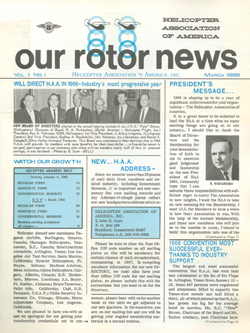
HAI’s first newsletter our Rotor News began in March 1966
The 17th Annual Convention was held at Del Webb’s Ocean House in San Diego, California, January 21-27, 1965. President Walter N. Attebery presided over the Opening Session. The banquet featured a clambake buffet. H.C. “Pete” Brown of Calicopters, Stockton, California was elected president; Robert A. Richardson, first vice president; Robert A. Berliner, second vice president; Daniel S. Campbell, secretary; and Arlo Livingston, treasurer.
In 1966, John Ryan succeeded John Pennywell, and assumed the title of Executive Secretary/Director. As a condition to assuming the position, the Association headquarters office was moved to Stratford, Connecticut. Bob Richardson of Chicago operator, Helicopter Air Lift, succeeded Ryan as President.
The 18th Annual Convention took on the flair of a Texas roundup at the Inn of the Six Flags in Arlington, Texas, on January 23-26, 1966. Four hundred and sixty-seven people, representing all 50 states and many other countries registered for the convention. In March, HAA’s president, R. A. “Bob” Richardson inaugurated HAI’s first newsletter. It was called Our Rotor News. Our Rotor News was issued by HAA to replace another publication titled “Confidential.” The first issue of Our Rotor News noted that while 467 people registered for the 18th Annual Convention, 1,400 attended. Pete Brown and Walter Attebery were delegated the responsibility of finding a larger facility for the 1967 convention. HAA membership grew to 89 Regular Members, 27 Associates, and 36 Government members for a total of 152 members.
HAA launched a publicity campaign in 1966 to increase the size of its membership. And the second issue of Our Rotor News reported a 20 percent increase in Regular and Associate membership. Volume 4 of Our Rotor News that HAA was the fastest growing organization in the aviation industry.
The 19th Annual Meeting and Helicopter Showcase was held January 15-18, 1967, in Palm Springs, California. Attendance was three times larger than any in the history of the Association. This huge attendance was attributed to a 300 percent increase in membership over the previous year.
At that meeting a proposal that had been made by several Regular Members during 1966 was considered, to change the name of Helicopter Association of America to Helicopter Association International, recognizing that during 1966, HAA’s membership in all classes had increased. Following this discussion, no action was taken. A large operator member increase was the result of new members from Canada, England, Australia, Japan, Africa, Columbia and Ecuador, South America. They were among some 1,000 owners and operators attending the national convention.
The 20th Annual Meeting and Helicopter Showcase, was held at the Stardust Hotel in Las Vegas on January 21-24, 1968, Godfrey Rockefeller of Chesapeake & Potomac Airways was elected President. It was announced that HAA had outgrown its Stratford, Connecticut home office and would be moved to West Chester County Airport in White Plains, New York. The gathering drew 1,300 registrants. The Association also arranged to have its annual directory published as an issue of Rotor & Wing magazine.
The 21st Annual Meeting and Helicopter Showcase was held January 8-11, 1969, at Florida’s Diplomat Hotel & Country Club in Hollywood, Florida. Back then many annual meetings were four-day events. The event attracted 1,024 attendees. Difficult issues were worked out and a number of important bylaw changes resulted in strengthening the organization. Okanagan’s Glenn McPherson was elected president and served till 1971.
HAI’s 22nd annual meeting was held at the Stardust Hotel, January 11-14, 1970, with 2,442 attendees and $17 million in exhibit sales. The first seminar on marketing and service programs was held. That year, the Robert E. Trimble Memorial Award was presented to Helicopteros Nacionales de Columbia (HELICOL) of South America, for its role in construction of the Trans-Andean Pipeline, one of the largest and most difficult helicopter projects ever attempted. The award for distinguished mountain flying normally goes to an individual, however, the entire HELICOL organization, including some 30 pilots, was awarded the honor. In August of 1970, HAA director John Ryan sent a letter to the President of the United States objecting to the government’s use of military helicopters in civil roles, a matter in which we are still active.
The 23rd Annual Meeting and Convention was held January 31-February 3, 1971 at the Anaheim Convention Center in California, where President Glenn McPherson welcomed 2,000 convention participants and association delegates. At the Annual Meeting, John Ryan resigned as Executive Director.
Robert Richardson became Executive Director in April 1971 and returned the headquarters to Washington, D.C. He served as Executive Director for almost 11 years. Under his leadership, the staff grew to 11 people and the headquarters offices were relocated to 15th & M Streets, N.W., then to another leasehold at 1110 Vermont Avenue, N.W., both in Washington, D.C. The June issue of Our Rotor News reported that Edward Hutchinson had been selected as the HAA Safety Officer. At the time, Petroleum Helicopters had become the world’s largest helicopter operator with 158 helicopters. The company’s aircraft had logged 1,000,000 flight hours.
The 24th Annual HAA meeting was held once again in Las Vegas at the Stardust Convention Center from January 9-12, 1972. Guest speaker was Stanley Hiller, Jr., who delivered a dynamic speech, which included a look back at the history of the industry. L. Welch Pogue, former, and first chairman of the Civil Aeronautics Board was honored as a Lifetime Member of HAA. J. Arlo Livingston was elected President and served for two years.
Among the $20 million worth of helicopters, engines, avionics, and accessories on display at the meeting were a Sikorsky S-58-T modified twin turbine and a Sikorsky H-37, known in civilian life as a Mojave. The March 1972 issue of Our Rotor News provided a full account of an eleven-helicopter rescue mission where 450 people were lifted to safety during 150 landings on top of the burning Andraus Building, a 29-story building in Sao Paulo, Brazil. The Helicopter Association’s next convention, the Silver Anniversary, was announced in this issue and was scheduled for January 14, 1973. As part of the Silver Anniversary celebration, a medallion was struck and presented to all registrants. In addition, HAA buried a time capsule — delivered and lowered to the ground by a helicopter.
The first HAA industry award was the Pilot of the Year Award. HAI currently has 9 “Salute to Excellence” Awards given out each year. The first HAA safety awards were presented at the 1973 annual meeting to member operators who had flown accident-free in 1972. Special awards were also given, including an award for the rescue work performed off of the Andraus Building rooftop.
More than 1,500 registrations were tallied at the Silver Anniversary convention. Highlights included an 18-flight demonstration put on by Bell, Vought, Enstrom, Aviation Specialties, and Boeing Vertol, which lifted 2,540 passengers from the Stardust’s north parking lot during 1,016 operations in one of the busiest flight schedules in HAA history. The association now claimed 209 Regular Members, 81 Associate Members, and 41 Sustaining Members — a 15 percent increase over the previous year. There were 29 International Members.
Jim Ricklefs, President of Rick Helicopters and first president of HAA, brought a restored Sikorsky R-4B, the world’s first production helicopter (1944) to Las Vegas. Ricklefs had picked up the aircraft three years earlier when he discovered it in the Illinois backyard of a fellow antique enthusiast, who had bought it as junk salvage. The aircraft was beginning to rust when Ricklefs carted it back to San Carlos, California, and began the three-year-long renovation. Ricklefs said he began the project, “Because I think it is a shame that many of the really historical helicopters are just being scrapped. They should be saved so there are examples for people to see.”
The 26th Annual Meeting was held in San Diego, California, January 13-16, 1974. At the gathering, the Board of Directors elected W.B. “Billy” Rowe, president of Campbell Air Service Inc., as president of HAA.
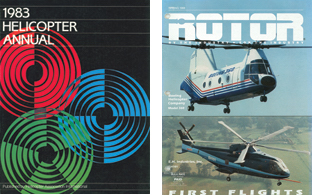
Inaugural issues of Helicopter Annual and ROTOR
In 1981, HAA became the Helicopter Association International, or HAI, in recognition of its truly international status. The title of Executive Director was changed to President when Frank Jensen took the helm in March 1982. After relocating several times, Jensen led HAI to purchase a small office space at 1619 Duke Street in Alexandria, Virginia, on August 10, 1985. On June 13, 1994, the staff moved to 1635 Prince Street, also in Alexandria. Jensen served for 16 years, and is credited with taking the helm of a tiny, economically struggling trade association and growing its membership, its outreach, and its trade show, HELI-EXPO. He is credited with starting the Fly Neighborly Program, a key element in garnering public acceptance of helicopters. Jensen was also the main influence in the formation of the Helicopter Foundation International (HFI) in 1983, a non-profit organization dedicated to preserving the history of the helicopter industry and helping to educate present and future generations of helicopter professionals. Also during this period, Corporate Secretary Elizabeth Meade was elected to the additional position of Executive Vice President. Other publication activities were also underway including the creation of the Helicopter Annual and ROTOR magazine.
Roy Resavage followed Frank Jensen as president on March 16, 1998. Resavage continued to improve the financial health of the organization, fought government encroachment, worked with a number of international organizations, and increased convention attendance. Upon Resavage’s retirement, Matthew S. Zuccaro assumed the office of President on November 1, 2005, after a 40-year career in the helicopter industry. During Zuccaro’s previous 25-year association with HAI, he had served as HAI Chairman, Vice Chairman, Treasurer, Chairman of several HAI committees, and was a recipient of HAI’s 10,000 hour Pilot Safety Award. President Zuccaro has expanded HAI’s international outreach, is an advocate for heliports and airspace access, aggressively challenges adverse legislative and regulatory concerns, while focusing on the provision of additional membership programs and services.
Under Zuccaro’s leadership, the association continues to move forward. In 2013, staff moved to a new headquarters building at 1920 Ballenger Avenue in Alexandria, Virginia. Zuccaro is noted for his pursuit of reducing the helicopter accident rate to zero, and he produced several initiatives aimed at that goal. One was the implementation of low-level ADS-B technology in the Gulf of Mexico, which was the result of Zuccaro’s efforts with the FAA. His other well-known safety program is Land & LIVE, which was born out of an article he wrote for ROTOR magazine in 2013. Titled “Land the Damn Helicopter,” the program encourages pilots to land their aircraft when weather or mechanical issues indicates they should do so.
In January 2020, James A. Viola assumed the reigns of leadership from Zuccaro, who had announced his retirement in 2019.
Our annual conference, HAI HELI-EXPO, annually draws around 20,000 industry professionals to the world’s largest helicopter trade show and exhibition. HAI regularly advocates on behalf of our members on Capitol Hill and with regulators, and participates in many international technical working groups and committees to improve safety and increase the economic viability of the industry.
HAI’s accomplishments are the result of the guidance from its Board of Directors, member input, and the efforts of a professional, dedicated staff. Also deserving of recognition are the special advisors who have made valued contributions to the industry: Joe Mashman, Ted Dumont, Walter Comeaux, and Timothy Biddle, to name a few.
From the beginning, our industry has responded to a long list of worldwide disasters — earthquakes, famine, and tsunami relief. Who can forget the industry’s response to 9/11 and Hurricane Katrina, the most destructive tropical cyclone to ever hit the United States? Each day, HAI member operators fill critical needs and play major roles in firefighting, EMS, forestry, offshore oil exploration, powerline work, newsgathering aerial photography, law enforcement, air tours, corporate transport and many more.
Since it was founded, HAI has served its membership and taken many actions on behalf of helicopter operators throughout the world. The organization has benefited the entire industry, to include manufacturers, suppliers, operators, pilots and mechanics. The association’s initiatives have had a direct and positive impact on international helicopter activities.
HAI is its membership. We’re not just the biggest — we’re the best. And it is all due to the continued support and active participation of our members. Their participation and guiding hand, via the Board of Directors, has given voice to our industry.
HAI and its members proudly celebrate 70 years of excellence and thank our founding fathers for their vision.
